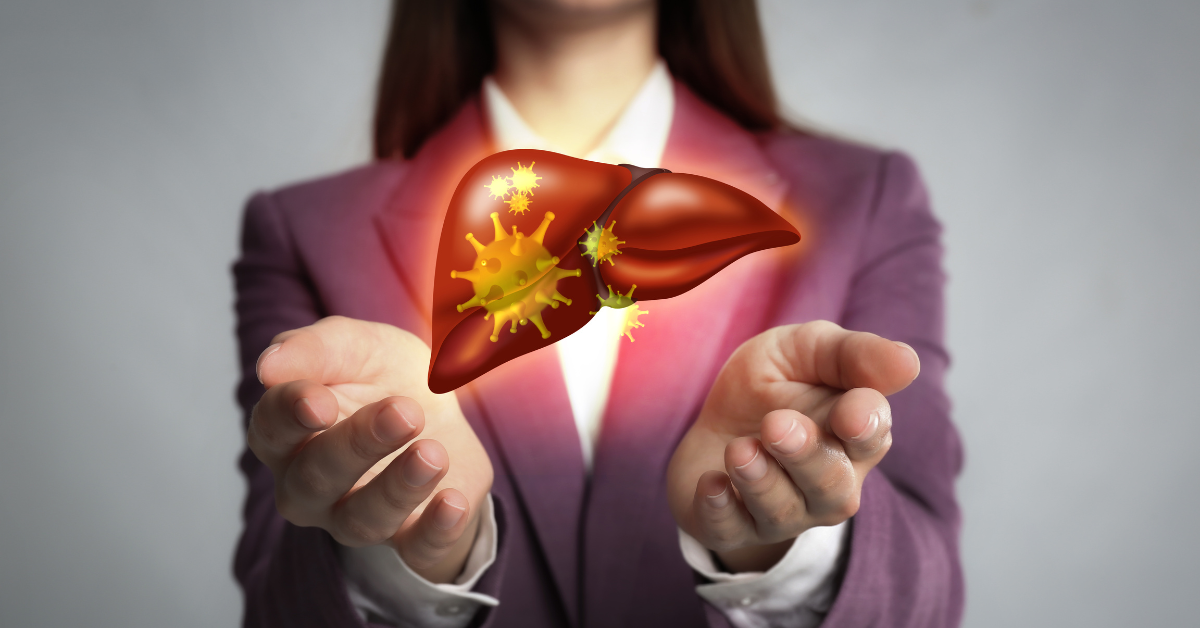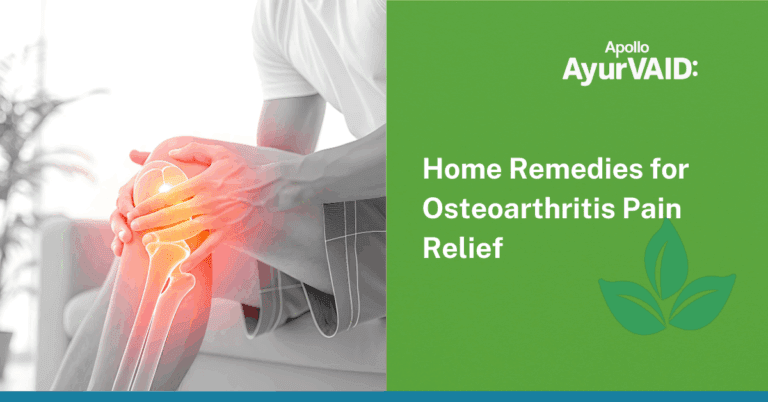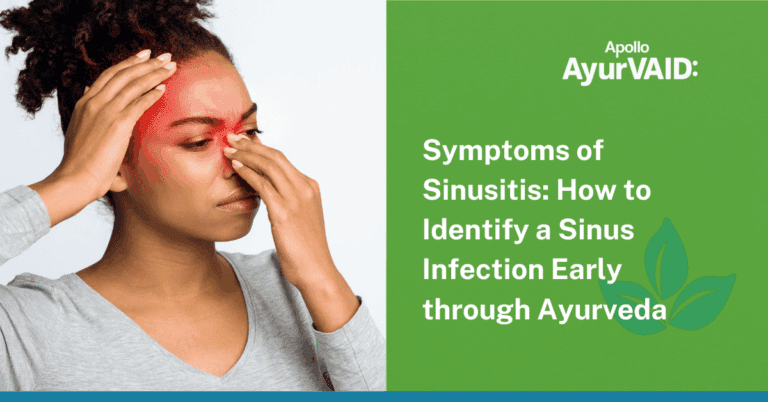World Hepatitis Day, a significant international event aimed at raising public awareness of viral hepatitis and its substantial impact on global public health, is observed annually on July 28. With more than 325 million people worldwide suffering from hepatitis infections, which cause significant morbidity and mortality, this day is essential for coordinating group efforts towards prevention, early identification, and efficient treatment methods. In this blog, let’s explore what Is Hepatitis Disease? Types of hepatitis, symptoms of hepatitis, and the role of Ayurveda in treating this condition.

What Is Hepatitis Disease?
There are five major types of hepatitis viruses, each with the following characteristics:
1. Hepatitis A (HAV) is common in less developed nations and spreads mainly through food or water contaminated by faeces via the faecal-oral route.
- Mild symptoms are fever, tiredness, nausea, pain in the abdomen, and occasionally dark stools or rashes. Recovery is usually within 3 to 6 weeks.
- Ayurveda often relates this to Yakrutshotha or Kumbha Kamala, and gentle cleansing (Mridu Virechana) along with changes in diet has shown positive results.
2. Hepatitis B (HBV): HBV is spread by contact with infected body fluids such as blood, semen, and vaginal fluids, usually through sexual activity, needle sharing, or mother-to-child transmission.
- More than 350 million people are infected worldwide, with India having an intermediate endemicity of 2-7% prevalence.
- HBV is acute (less than 6 months) or chronic (more than 6 months).
- Early symptoms of HBV infection can resemble flu symptoms, including malaise, muscle and joint pains, fever, and gastrointestinal disturbances; specific signs include yellowing of the eyes or skin and dark urine.
- The invasion by the virus imparts a characteristic “ground glass” appearance to hepatocytes, and persistent viral shedding underlies chronic infection.
- Vaccination is an important preventive strategy.
3. Hepatitis C (HCV): Transmitted primarily through blood-to-blood contact (e.g., needle sharing), HCV is typically asymptomatic initially but can cause serious liver damage over time. Most cases are cured by antiviral medications.
4. Hepatitis D (HDV): This virus infects only those who are already infected with the HBV and worsens the liver disease. Prevention of HBV thus also precludes HDV.
5. Hepatitis E (HEV): Transmitted mainly through water, HEV is usually acute and self-limiting but can be severe in pregnant women. Prevention depends upon sanitation and clean water; vaccines exist in some regions.
Hepatitis Symptoms
General symptoms of hepatitis may range from mild to severe. Fatigue, jaundice (yellow discoloration of the skin and eyes), stomach pain, nausea, vomiting, dark coloration of urine, pale stools, and loss of appetite are common symptoms.
- Unusual presentations such as rashes (Hep A) or arthralgias (Hep C) may also be present.
- Chronic forms, especially of B and C, may result in sustained liver injury without the clear onset of early symptoms.
Hepatitis—An Ayurveda Perspective
Hepatitis is often seen as Yakritsotha (swelling of the liver) or Kamala (yellowing of the skin), mainly caused by an imbalance in Pitta Dosha and problems with Rakta Dhatu (blood), often along with Kapha Dosha. The treatment involves a holistic approach aimed at relieving symptoms and addressing the underlying causes of liver inflammation. The treatment plan is usually Shamana Chikitsa (palliative treatment) together with Pathya Ahara Vihara (wholesome food and lifestyle regimens). One of the main treatments is Virechana Karma (a cleansing process) that helps get rid of harmful substances in the body by following a specific healing diet (Samsarjana Krama).
- Ayurveda preparations that are typically liver-protective, anti-inflammatory, and regenerative in action are frequently prescribed. They are usually bitter (Tikta rasa) with mild purgative properties.
- Dietary guidance includes fresh fruits, green leafy vegetables, and buttermilk, with avoidance of fatty, spicy, and processed foods.
- Lifestyle guidance such as regular meals at proper times, adequate sleeping, and daily Pranayama (breath control) is also included.
NOTE: Ayurveda can be used to complement conventional care but may not be depended upon as an alternative for antiviral or immunosuppressive therapy, especially for acute, severe, or chronic cases.
World Hepatitis Day on July 28 plays a critical role in drawing world attention to viral hepatitis, calling for immediate needs such as expanded access to testing and treatment.
The 2025 theme, Hepatitis: Let’s Break It Down,demands immediate action to break down the financial, social and systemic obstacles – stigma being one of them – that block the way to hepatitis elimination and liver cancer prevention.
This theme emphasises the need to address the various barriers faced in hepatitis elimination and liver cancer prevention. Economic limitations frequently prevent early diagnosis and treatment. Concurrently, ingrained social stigma silences affects individuals, deterring them from accessing care. Systemic gaps like lack of awareness, poor screening infrastructure, and poor integration into primary healthcare also delay proper intervention. Overcoming these barriers demands a shared commitment to equity-based healthcare policy, public education, and strong community action so that hepatitis is never a silent epidemic but an agenda in global health action.
It reminds us about the constant struggle against this disease, emphasising continued campaigns of awareness, mass vaccination, and active government strategies against hepatitis prevention and control.
In summary, hepatitis is a serious health issue all over the world. By sustaining awareness through campaigns such as World Hepatitis Day, encouraging early diagnosis, and adopting both contemporary medical technology and traditional holistic practices like Ayurveda, together we can aim toward a future where hepatitis ceases to be a global health issue.







